Text
Transformation through community: Breaking out the cocoon and readying for take-off.
Like a caterpillar that enters its cocoon and emerges as a magnificent butterfly ready to fly off, I find myself transitioning into that butterfly readying myself for take-off and gathering golden nuggets found within my cocoon called CMC. I entered this block as a socially, culturally, and introspectively different individual than I am now. Throughout the weeks my learned mindset, beliefs, biases, and understanding have become undone layer by layer. I found myself wrestling with conflicting ideas and questioning my lifelong beliefs which made the undoing uncomfortable, but this process was necessary. Real learning and growth only begin when you step out of your comfort zone (Harvey and Meuse, 2021).

This block taught me the importance of developing my learning agility (Harvey and Meuse, 2021). I set foot into CMC with anxious expectations at an all-time high and had to adopt the skills of adaptability and critical thinking. To become an agile learner, I had to switch off my automatic thinking; and turn on my reflective thinking (Beck and Clark, 1997). This skill goes beyond just working in a community that is unknown to me but carries over into practice as an OT in different clinical placements and broader aspects of my personal life that call for adaptability.
This adaptability spans many avenues. The first began internally, our families and communities we are reared in are the primary source of our values and worldviews (France et al., 2021). Some views aren’t taught, but they still exist and are inherited. We have a responsibility to challenge the distorted generational thoughts. I began to question myself…Why do I cling to my cell phone when I see a man approach us on the streets of the community? Why do I feel so uneasy and suspicious? Why am I so comfortable within my community where crime also exists at an equally high rate? Perhaps it's rooted in my parents telling me to roll up the windows when driving through a similar community to CMC or the look of concern on my grandparents’ faces when I told them that my OT journey has led me to the streets of CMC. I have learned to become an introspective being, of both me and my relationship in my surrounding world.
Another need for adaptation stemmed from the instilled fear for my safety and academic expectations. I recall being told that getting elderly clients to comply would be difficult so I should work on an alternate plan and that I should never walk around the community, but rather take a taxi. Reflecting on the things I've heard highlights the importance of not catching hold of somebody else's experience and biases and letting them influence yours. I learned to be selective with the input I receive and to never make judgments based on someone else’s experience. Now I walk around the community saying “Sawubona” to every person I walk by with my hands waving rather than clinging to my phone. This was an important skill for every block and my future community and work placements.

The last intrinsic adaption I made was to my understanding of our differences. We are taught that our differences are what separates us and makes us incompatible in friendships and teamwork. We often migrate toward working with people we have things in common with, but with the high demand for group work, I learned to change my perspective. Within my group, our differences fit together and form our strengths and this is a principle that is applied on a community level. It is the differences that allow us to learn from each other and strengthen our attempts in projects and life.

My professional transformation led to valuable insights into working within different communities. I learned the importance of understanding the culture that is specific to the community I've been placed in. Lectures teach us the framework and guidelines to follow when treating a client, but community-based practice teaches us the true importance of holistically considering the socioeconomic factors within a social location (Johnston et al., 2009). From this, I learned that therapy should not solely focus on fixing the brokenness, brokenness can be found everywhere if we consider a person and community holistically, we will see their strengths and assets that can be capitalized on despite the unfixable brokenness. This applies to DCT, com-serve, and applying for jobs outside of my area.
Collaboration is an overarching concept in community practice. Collaboration with the MDT at the clinic, with clients in therapy, with teachers at the schools and creches, with CHWs, and with NPOs influence the outcome of our projects. I entered CMC thinking that we’re separate entities coming to make a change and render our service to community members. I now understand that effective projects have community buy-in, this is where our OT charm comes in. We compliment, chop veggies, pitch the benefits of our activities, and listen our way into collaborations to achieve change and success. A sustainable project is a project that is not dependent on us as OTs but can become integrated into the community. This highlights the importance of planning projects for the community, with the community to achieve sustainability. This bridges the gap between the change we intend to achieve and showing cultural humility. I used to think that cultural competence was the only answer to effective therapy outcomes, but working with CMC has emphasized the importance of life-long cultural learning and that one can never be completely culturally competent. We should rather aim to show cultural humility (Agner, 2020).
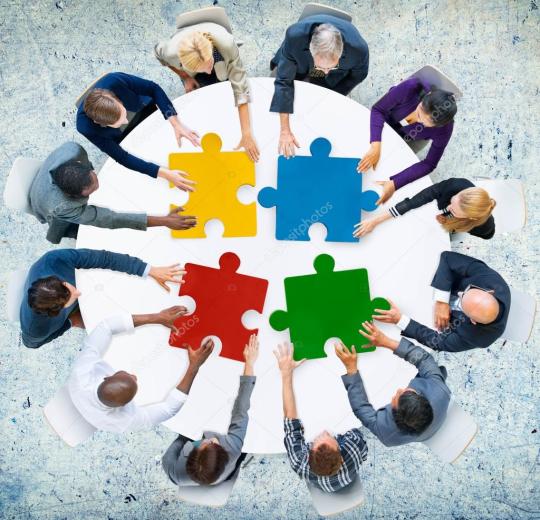
I entered this community block anticipating the worst, but as I prepare to exit the block I leave with gratitude. I am grateful that I now have a solid foundation and change of perspective that influences the OT I will be in the blocks to come and beyond. Real learning begins when you step out of your comfort zone and put things into practice. Coming from somebody who loves their comfort zone my advice would be just to take the leap and embrace the learning and change that comes with it.
As I transition from block to block and then to com-serve and beyond, I hope to be a holistic and critical OT who can be bold and confident in my capabilities. I aim to continuously add to my mental OT drawer and decrease my cultural incompetence…I can never truly be competent after all. But I want to be that OT who challenges the brokenness of our system and builds bridges over the unfixable brokenness. My clients won’t need their BP reading to receive therapy and they won’t be denied home visits. My clients will receive therapy from an OT who considers their life beyond the clinic doors. As I emerge from my cocoon, I leave with gratitude and a new desire to challenge the inherited thinking of our culture, families, and generation, be holistic in every decision, and capitalize on our strength in collaboration. These are the learnings that shape approaches to therapy and life in our future.
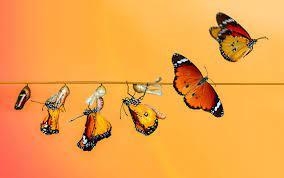
References
Agner, J. (2020). Moving From Cultural Competence to Cultural Humility in Occupational Therapy: A Paradigm Shift. American Journal of Occupational Therapy, 74(4), 7404347010p1. https://doi.org/10.5014/ajot.2020.038067
Beck, A. T., & Clark, D. A. (1997). An information processing model of anxiety: Automatic and strategic processes. Behaviour Research and Therapy, 35(1), 49–58. https://doi.org/10.1016/s0005-7967(96)00069-1
France, M. H., Rodriguez, M. del C., & Hett, G. G. (2021). Diversity, Culture and Counselling, 3rd Ed.: A Canadian Perspective. In Google Books. Brush Education. https://books.google.co.za/books?hl=en&lr=&id=WH86EAAAQBAJ&oi=fnd&pg=PA35&dq=how+are+worldviews+shaped+by+family+beliefs&ots=_KdcgL2iZg&sig=DZw8_bpCVppsIGRSfsWB43Ce1iM&redir_esc=y#v=onepage&q=how%20are%20worldviews%20shaped%20by%20family%20beliefs&f=false
Harvey, V. S., & Meuse, K. P. D. (2021). The Age of Agility: Building Learning Agile Leaders and Organizations. In Google Books. Oxford University Press. https://books.google.co.za/books?hl=en&lr=&id=la8gEAAAQBAJ&oi=fnd&pg=PA204&dq=growth+begins+outside+of+your+comfort+zone&ots=0k-6xiPJst&sig=Wu8LGALckeS9VSq08gC_SspL7DU&redir_esc=y#v=onepage&q&f=false
Johnston, D., Angelucci, T., Howey, M., Waldron, I., Townsend, E., & Lawlor, S. (2009). Social influences on primary health care occupational therapy. World Federation of Occupational Therapists Bulletin, 60(1), 49–55. https://doi.org/10.1179/otb.2009.60.1.008
0 notes
Text
Understanding our role in driving the vehicle of change towards our destination of achieved SDGs.
Sustainable development goals (SDGs)…a destination we anticipate reaching with a time of arrival estimated at 2030 (United Nations, 2018). Picture a car engine with many intricate gears interlinked and turning together to drive the vehicle of change forward. We are those gears. Policymakers, healthcare workers, teachers, and community members. We all play a critical role in achieving this change. As occupational therapists part of our role is to get the ball rolling and acknowledge that this change happens when we foster a partnership with all parties this change influences. This principle itself is a goal embedded within the SDGs. Everybody needs to contribute to accomplish these goals (Domingo, 2022).

Entering this community block has broadened my views on SDGs and Occupational therapy. I recall learning about SDGs in my first year but never linked the instrumental role that OTs have in achieving them. Now after gaining a richer understanding of our communities, when I look at these SDGs, I identify that they underlie every goal of therapy…be it amongst groups or even individuals. As holistic practitioners and advocators, they all influence our practice.
The first goal we aim to influence within Cato Manor is SDG 1: No poverty. South Africa itself is known for its high poverty rates and the country’s unemployment epidemic that exacerbates this. Poverty underlies many other socio-economic issues, such as lack of access to nutritious foods, healthcare, and poor mental health for those who have to provide for their households.
We aim to address this by offering skills training at the secondary school where we provide therapy. When I first entered the community, I thought that I would be that agent of change that would “empower” individuals to break out of the cycles within their community and achieve like some of those cases we hear about making it out. But as I became more in tune with life within the community, I began to understand that we cannot enter trying to cater to a minority of people, but rather to the majority who may not make it out of the system as easily. At secondary school we began to see and understand that not every child will make it to a university or college… but every student has their strengths and those strengths are where our intervention should be focused. Our aim at the school is skills training and CV-creating to give these students some of the necessary tools to seek out employment or provide services they are gifted to provide.
Government assistance in the form of grants is a means to alleviate poverty. Still, within occupational therapy, government aid is just one avenue to alleviate the poverty status of our communities. Personally, part of meeting this aim is to eradicate a possible learned dependence on government aid to help improve community members’ ability to be self-sufficient where possible so that the attainment of this goal is long-lasting and not temporary. Employment probability generally decreases with grants- this is seen with some patients who are seen at the clinic wanting assessments for grant applications but proving capable of employment (Miyajima, 2023). Occupational therapists need to encourage and help enable community members to live lives to their full potential.
Food insecurity is another factor identified that is linked to poverty. Vulnerability to food insecurity is exacerbated by the lack of human and financial capital (Mthethwa & Wale, 2021). SDG 2: Zero Hunger. Food insecurity is at a high rate within rural South Africa. Leaving many households without a source of food. Within the community, there is currently a municipal initiative that is run by CDWs (These are gogos from within the community who are hired by the municipality to cook at the community kitchen). This drive was prioritized due to the detrimental impact of missed meals on medication compliance among community members. This negatively impacted their health and well-being. These meals are limited to 1 meal a day. Part of our vision for the Cato Manor community is to create a community garden that would sufficiently provide vegetables and fruit to some of the most vulnerable families in the community so that their food intake goes beyond just one meal a day. The CDWs in the kitchen are integrated into the community and may help with the identification process of these families. Another way to work towards this is by identifying community members at the clinic who are vulnerable to food insecurity and educating them about the initiative and the various pickup points throughout the community.
SDG 4: Quality education is another important SDG goal we aim to address. Working around the area of the schools allows us to make valuable observations. How is it that a student walks past the community library at 10:38 am on Monday? The high volume of learners within classrooms raises many concerns related to the quality of education rendered to each individual. As a student, it is easy to understand the snowball effect of falling behind or being left behind during class. We aim to solve this by focusing our therapy sessions on students who were flagged by the school's teachers and social workers. We are also focusing on laying a good educational foundation at the creches we work at to enable a successful transition to primary school. Another factor is ensuring quality education for all…including those with learning disabilities. We find that these are often overlooked or not identified. So, we aim to equip teachers with the necessary information and resources to identify students who require assistance.
SDG 5: Gender Equality is a big goal within many communities. Traditional gender norms chain many women within the community to gender roles and limit their opportunities for career or job prospects. Within our maternal mental health groups, we aim to break many of these stigmas by addressing GBV, access to healthcare services, prioritizing self-care, and possible income generation. We also aim to equip young girls during our after-school program by addressing academics, career prospects, and teenage pregnancy. We aim to promote equal access to healthcare, education, jobs, and decision-making (Moyo and Dhliwayo, 2019).

SDG 3: Good health and well-being for all is the overarching goal that shapes our therapy. Within the Cato Manor community factors such as financial constraints, unsupportive home environments, societal and cultural beliefs, and the overall brokenness of our healthcare system influence people’s health and well-being. One of our initiatives is a maternal health support group that focuses on the overlooked mental health of mothers. Another way to address this would be during our after-school program by encouraging healthy leisure pursuits and upskilling students. We have taken on an advocacy role by doing health promotion and advocating for mobile clinics and treatment for the conjunctivitis outbreak within the community.
So, it's important to emphasize that we all are stakeholders who play an important role in driving along this journey to our destination. The projects we run in the community are hoped to be the pebbles in the pond that create a rippled effect and recruit community members and other organizations towards this change. We are all the interlinking gears after all. By working collaboratively within our communities, for our communities, we can leave the barriers to reaching our SDGs behind in the rearview mirror.
References
Domingo, Z. (2022, January 14). Why are partnerships important for sustainable development projects? | GVI UK. Www.gvi.co.uk. https://www.gvi.co.uk/blog/why-are-partnerships-important-for-sustainable-development-projects/
Miyajima, K. (2023). The Link Between Social Grants and Employment in South Africa. Selected Issues Papers, 2023(039). https://doi.org/10.5089/9798400243493.018.A001
Moyo, T., & Dhliwayo, R. (2019). Achieving Gender Equality and Women’s Empowerment in Sub-Saharan Africa: Lessons from the Experience of Selected Countries. Journal of Developing Societies, 35(2), 256–281. https://doi.org/10.1177/0169796x19845957
Mthethwa, S., & Wale, E. (2021). Household Vulnerability to Food Insecurity in Rural South Africa: Evidence from a Nationally Representative Survey Data. International Journal of Environmental Research and Public Health, 18(4), 1917. https://doi.org/10.3390/ijerph18041917
United Nations. (2018). United Nations sustainable development agenda. United Nations Sustainable Development; United Nations. https://www.un.org/sustainabledevelopment/development-agenda-retired/
0 notes
Text
UKZN OT Curriculum: A guide to becoming a switched-on community therapist.
Click, clack, click, clack…a familiar sound that can be heard in some scattered South African OT departments. Can you imagine your occupational therapist transferring you from your wheelchair to a plinth with heels on?! It would be unfair to generalize by saying this is a common South African occurrence, but there are those stand-alone cases. The very cases we are trained to identify, challenge, and hopefully not add to those unrecorded stats. Critical thinking. This concept is taught within the UKZN OT curriculum and trains us to not practice with blinkers on but to actively question, analyse, reason, articulate, and justify every action and decision (Papastephanou and Angeli, 2007). UKZN OT curriculum as a whole applies to more than just identifying injustices, this informs the dynamic and holistic practitioners we will grow into very shortly.
There are points within this degree that a student may feel ill-equipped, we need to consider the different learning styles and their effects on learning outcomes (Cimermanová, 2018). As a practical learner, I often find myself entering a practical block feeling inadequately prepared, but as the days and weeks go by, I find myself digging into that storage cabinet at the back of my head and pulling out the information and tools that I have already been equipped with. Despite moments of uncertainty, it all begins to pull together and makes sense. If I look at the curriculum in retrospect, I now start to see how it trains us to be holistic and adaptive. Perhaps this con is a temporary con, experienced for a short period until we see the bigger picture and it is then transformed into a pro. If we reconsider the different learning styles, perhaps the current structure of the curriculum is the only feasible and realistic structure that will produce holistic and adequately competent OTs.
A con I have experienced is that differing placement sites for practicals provide different exposure and experiences. Due to the random selection of placement sites, your experience may be diverse, ranging from acute to chronic and to differing diagnoses. In my case I got to experience many chronic cases due to my placements, this allowed for ample time for practice and implement theory learned vs. another friend in my community group who had a range of acute and chronic placements. This allowed her to work with conditions and diagnoses that I have not yet put into practice, as well as taught her the skill to rapidly assess and formulate a treatment plan this is needed in community practice as the people you see daily filter through and may not be seen again.
The large workload within this curriculum may also be considered a con. Whilst each topic builds onto the next it is important to highlight just how rapidly learning happens. It is also important to understand that for some learners it takes additional time to retain the information taught (Farley et al., 2013). It is then easy to slip into falling behind or get lost whilst still trying to catch up with the heavy workload.
Another con that came to mind is the different supervision styles that come along with different supervisors. Despite the academic expectations being standard at the start of each block I find myself adjusting to the different ways each supervisor prefers expectations being met. This feeds into a pro of the curriculum. With different supervisors come different perspectives and guidance. The differing feedback allows for professional growth (Fong et al., 2018).
The impact of COVID-19 on our learning of this curriculum cannot be overlooked. In 1st year we do an amazing community module that gives us insights into our communities and related socioeconomic factors. However, our 1st year entailed online learning. This resulted in us having an unsteady community foundation that may result in us being ill-prepared for community practice in 4th year.
The biggest pro of this curriculum is that the learning methods are relevant and enable the meeting of module objectives, such as the community module. For example, working within the community allows us to learn concepts and lessons from case-based experiences, and collaboration within the MDT at CMC at a PHC level, this helps prepare us for our future professional lives when working with the MDT and understanding each team member's scope of practice and how we fit in.
Our country has a lack of resources. On one end of the scale is the fact that some of the clinics and hospitals we are placed at may have adequate resources, whereas, on the other end, our communities are not as well-resourced. This teaches us to become flexible, adaptive, and innovative. This trains us to work with the resources we have and this prepares us for whatever we may be faced with within the PHC sector next year during community service.
In terms of the structure of the curriculum, my opinion is split. There is a logical progression of topics that feed into each other. However, the 2nd and 3rd year of our degree is separated into two blocks- psychosocial and physical. This helps break down learning to help us understand but it also may cause learning to happen in a compartmentalized manner. This may be a con as community and treatment within the PHC level like any other OT intervention and assessment requires a holistic view and those invisible partitions to be broken down.
Group work is a pro intertwined into this degree and allows for peer learning. Within a group, we are exposed to people who are different from us in terms of religions, beliefs, cultures, values, and socioeconomic factors, such as family, financial background, etc. This is an important learning environment that opens our minds and understanding to a world broader than our experience of it.
Despite some of the cons identified, I think that the UKZN OT curriculum is perfectly set out to prepare us for community practice and the provision of PHC. Agreeably some factors, such as COVID-19 and random selection into similar placements are inevitable, other factors work together to prepare us to be the amazing OTs that lace up their sneakers and get down to work. A lesson learned over the past 3 years is to trust the process. As the blocks go by and practice is gained everything comes together and starts to make perfect sense. We have what it takes to be the switched-on community OTs we need to be.

The following link directs you to the outline of the UKZN OT curriculum: https://ot.ukzn.ac.za/undergraduate-programmes/
References
Cimermanová, I. (2018). The Effect of Learning Styles on Academic Achievement in Different Forms of Teaching. International Journal of Instruction, 11(3), 219–232. https://eric.ed.gov/?id=EJ1183439
Farley , J., Risko , E., & Kingstone , A. (2013). Everyday attention and lecture retention: the effects of time, fidgeting, and mind wandering. Frontiers, 4.
Fong, C. J., Schallert, D. L., Williams, K. M., Williamson, Z. H., Warner, J. R., Lin, S., & Kim, Y. W. (2018). When feedback signals failure but offers hope for improvement: A process model of constructive criticism. Thinking Skills and Creativity, 30, 42–53. https://doi.org/10.1016/j.tsc.2018.02.014 Papastephanou, M., & Angeli, C. (2007). Critical Thinking Beyond Skill. Educational Philosophy and Theory, 39(6), 604–621. https://doi.org/10.1111/j.1469-5812.2007.00311.x
0 notes
Text
Maternal and Child Health: The Heart of Our Communities.
At the heart of every household, family unit, and broader community lies its future. This future is embodied with laughter, hope, dreams, ideas, and potential. At the heart we find our future generation...our children. The wellbeing and development of our children remains the foundation that our future is built on. This development goes beyond just nurturing bodies but also growing the minds and the potential that lies within our children. Now imagine a mother overwhelmed and with little motivation. She has a little baby and doesn’t know how she is going to manage her other children, responsibilities and generate income. In a study by Canadian Paediatric Society (2004), it is discussed how infants interact constantly with their mothers and the mental health of mothers have influences on the development of children. Imagine that little sprout of potential wither without the necessary stimulation and factors that aid growth. This is the reality of our South African communities. Can we then blame mama for doing the best she can?

According to Imdad et al. (2017), both overnutrition and undernutrition have negative effects on the growth and development during pregnancy and infancy and places the child a risk of chronic illnesses in adulthood. From my experience within most urban communities and culture women are advised to eat a nutritious diet and sometimes may even take supplements to boost her nutritional intake and immune system during pregnancy. This however is not always the case in rural context. Poverty remains a prevalent issue in rural communities. A nutritious diet may be found lower down on the list of priorities. An article by Ramakrishnan et al. (2012), states that nutritional status before and during early pregnancy impacts early developmental processes. This can lead to developmental delays, education difficulties and in the long term this may affect performance in school, job acquisition in the competitive job market given our country’s unemployment rates and overall contribution to society.
Teenage pregnancy also remains a prevalent issue in both urban and rural South African communities. According to Africa (2022), an alarming amount of “106 383 registered live births” were recorded between the ages of 10-19 years in 2019. This was unpacked with a case I encountered within the community. A toddler was brought to the mobile clinic by his aunt and his cousins due to his mum still being a scholar. Unfortunately, there isn't always somebody to care for babies within a community. This leads to young mothers dropping out of school, academic pressure due to the stress of having to care for a baby, responsibility falling onto other family members (e.g., Gogo) or child-led households in some cases. This has negative socio-economic implications due to difficulties gaining employment in the future, the additional strain on mental health may result in a strained relationship between mother and child, Gogo or other family member experiencing caregiver burden- contributing to poor community and child development.
HIV is another prevalent issue within community that cannot be ignored. Mothers who are HIV positive risk contracting the virus to their child whilst breastfeeding. In an article by Njom Nlend (2022) , it states that although mother to child HIV infections have decreased worldwide, transmission of the virus via breastfeeding still contributes to “50% of paediatric HIV infections recorded every year”. We must realistically consider that breastfeeding is an economically appropriate alternative to formula milk due to poverty. If a mother is not compliant with her ARV’s she may not be able to work and contribute to society monetarily and socially. If the child’s HIV is not managed properly, he/she would not be able to develop and participate in age-appropriate occupations.
Within rural South Africa there are also many women lead households. This added responsibility along with post partem depression may cause decreased time spent with baby, resulting in decreased stimulation and the increase in the responsibilities taken on by other children, such as seeing to the needs of younger siblings. This also implies less time to assist older kids with school related tasks, impacting the occupational balance and age-appropriate engagement of occupations of the child. This affects their ability to focus on education and in turn may negatively impacts school performance and maximizing the child’s potential.
So, what does this really mean for us as occupational therapists…
Practicing within the community requires a different lens. You need to see the humanness within a client and understand their experience of life. This week I learnt not only that there are challenges that exist but there are also those factors due to circumstances or the community itself that cannot be changed but need to be acknowledged and challenged.
As an OT that is entering the community from the outside it is important to show cultural humility. Cultural humility can be described as the “negotiation between two worldviews”- yours and your clients (Schuster, 2021). Just because these issues are not as prevalent in your community does not mean they do not exist. You may never fully understand their experience but you are to display understanding and acceptance. This improves therapy outcomes, compliance from clients and the openness of clients when they feel they are understood.
Health promotion is an important component of occupational therapy. Many cases within the community are due to the lack of knowledge and this results in the worsening of a condition. During maternal and paediatric screening, a case of medical negligence and worsening of disability was identified due to the lack of insight and loss of trust in healthcare professionals. This is just one case- health promotion also helps identify difficulties earlier on to prevent the worsening and to improving education on common paediatric conditions for early intervention. It also provides the pathways and guides to seek assistance.
It was also discovered that many creche going children within the community are non-verbal despite already passing the age-appropriate developmental milestone. Due to socio-economic factors and mothers needing to work, teachers at creches and primary schools need to be trained by an occupational therapist to bridge the gap of developmental delay by providing a stimulating learning environment. If intervention is provided early the delay could be “caught up” (Cleveland Clinic, 2023).
Occupational therapists have the most important role of identifying barriers from an occupational science lens and addressing the barriers to promote maternal and child health. For example, they need to see the problem, the root of it and figure out how to mitigate this issue to achieve the goal of good maternal and child health.
So, if we look back to our mama who is overwhelmed and her children who are taking on additional responsibilities. We cannot change her reality but we can dig deeper into preventing the expected negative outcomes by putting the necessary measures in place to bridge the gaps. If you want to see the change in the interlinked relationship between mother and child and achieve good overall community health, your clinical eyes need to see past your own familiarity.
References
Africa, S. S. (2022, March 28). The Young and the Restless – Adolescent Health in SA | Statistics South Africa. Stats Sa. https://www.statssa.gov.za/?p=15261
Canadian Paediatric Society. (2004). Maternal depression and child development. Paediatrics & Child Health, 9(8), 575–598. https://www.ncbi.nlm.nih.gov/pmc/articles/PMC2724169/
Cleveland Clinic. (2023, March 27). Developmental delays. Cleveland Clinic. https://my.clevelandclinic.org/health/diseases/14814-developmental-delay-in-children
Imdad, A., Lassi, Z., Salaam, R., & Bhutta, Z. A. (2017, January 1). Chapter 1 - Prenatal Nutrition and Nutrition in Pregnancy: Effects on Long-Term Growth and Development (J. M. Saavedra & A. M. Dattilo, Eds.). ScienceDirect; Woodhead Publishing. https://www.sciencedirect.com/science/article/abs/pii/B978008100168400001X
Njom Nlend, A. E. (2022). Mother-to-Child Transmission of HIV Through Breastfeeding Improving Awareness and Education: A Short Narrative Review. International Journal of Women’s Health, Volume 14, 697–703. https://doi.org/10.2147/ijwh.s330715
Ramakrishnan, U., Grant, F., Goldenberg, T., Zongrone, A., & Martorell, R. (2012). Effect of Women’s Nutrition before and during Early Pregnancy on Maternal and Infant Outcomes: A Systematic Review. Paediatric and Perinatal Epidemiology, 26, 285–301. https://doi.org/10.1111/j.1365-3016.2012.01281.x
Schuster, D. (2021, May 13). Honing Cultural Humility Skills Can Improve Health Care as a Whole - Penn Medicine. Www.pennmedicine.org. https://www.pennmedicine.org/news/news-blog/2021/may/honing-cultural-humility-skills-can-improve-health-care-as-a-whole
0 notes
Text
Barriers to help-seeking in South Africa and it's negative impact.
You’re standing outside your exam hall about to write your third exam for this week. You feel mentally drained after going back and forth with your boyfriend about balancing your relationship and academics. You needed to study throughout the night in order to be prepared but somehow fell asleep and was only able to learn 4 of the 8 topics. Then you hear your phone chime as you’re about to step into the room…“I can’t do this anymore; I’m breaking up with you”. You wrote your test and walked out knowing you’ve failed. After trying to cope on your own for 3 days, you finally decide to share your sadness and stress with your mum, but all she could tell you was that losing a guy is not the end of the world and to pray about it. This is the sad reality for some individuals who suffer with mental health. Research has found that “parental attitudes surrounding mental health and mental health services have been shown to influence help-seeking decisions” (Reardon et al., 2017). The negative perceptions and various understandings prevent individuals from getting the help they need.
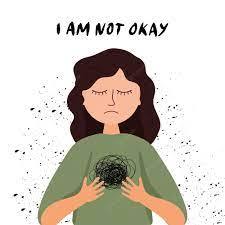
Although we have aimed at raising more awareness and better access mental healthcare there are still many aspects that pose a dilemma to help-seeking in SA, some of theses include: emotional competence, lack of insight and understanding, family, cultural views, stigma, and poor financial health.
Rickwood et al. (2005), describes emotional competence as our ability to describe, understand and manage our emotions. Some people choose not to seek help for due to not being able to properly explain their condition to a health care professional and their unsuccessful past experiences.
South Africa is so diverse with many cultures, but a common misconception found in some south African cultures is that western medicine is a means to treat physical illnesses and traditional medicine is for mental illnesses (Bila and Carbonatto, 2022) . Furthermore, many people lack the understanding of the symptoms of mental illnesses. They may understand that they feel stressed, extreme sadness or overwhelmed but they may find alternate explanations to these feelings (Gulliver et al., 2010) .
Many people choose to avoid seeking help or are dissuaded from seeking help due to the fear of the stigma attached to a diagnosis or needing help itself. This leads back to culture and family, they may be taught that seeking help for mental health shows weakness and is something to be embarrassed about (Rickwood et al., 2005).
Another major factor that poses a barrier to help-seeking in SA is the poor financial health of people. SA has high levels of unemployment and of poverty. Seeking help for mental illnesses may not be high up on peoples priority list.
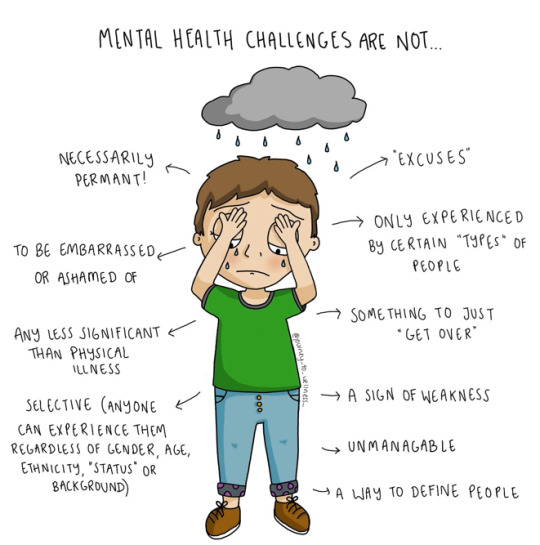
As a future occupational therapist these barriers create concern. Lack of help for mental illnesses results in the lack of management of the symptoms of these illnesses. This in turn negatively effects the occupational participation and performance. It was found that people engage in their occupations infrequently and saw it as a long-term goal due to their lack of motivation, energy, and normal sleeping patterns (Baker and Procter, 2014). This is concerning. If we want to be a progressive nation that reaches our full potential. Change needs to happen. That change starts with us. Our perspectives, views, and attitudes. Nobody wants to go through life not understanding why they feel extreme sadness, cannot eat, or sleep properly. Nobody wants their feelings to be minimized and discredited. Nobody wants to suffer in silence. Whilst the change has begun there is still a long way to go- We need to continue to be advocates for mental health, because this should be a priority.
References
Baker, A. E. Z., & Procter, N. G. (2014). Losses related to everyday occupations for adults affected by mental illness. Scandinavian Journal of Occupational Therapy, 21(4), 287–294. https://doi.org/10.3109/11038128.2014.894571
Bila, N. J., & Carbonatto, C. L. (2022). Culture and help-seeking behaviour in the rural communities of Limpopo, South Africa: unearthing beliefs of mental health care users and caregivers. Mental Health, Religion & Culture, 1–20. https://doi.org/10.1080/13674676.2022.2097210
Gulliver, A., Griffiths, K. M., & Christensen, H. (2010). Perceived barriers and facilitators to mental health help-seeking in young people: a systematic review. BMC Psychiatry, 10(1). https://doi.org/10.1186/1471-244x-10-113
Reardon, T., Harvey, K., Baranowska, M., O’Brien, D., Smith, L., & Creswell, C. (2017). What do parents perceive are the barriers and facilitators to accessing psychological treatment for mental health problems in children and adolescents? A systematic review of qualitative and quantitative studies. European Child & Adolescent Psychiatry, 26(6), 623–647. https://doi.org/10.1007/s00787-016-0930-6
Rickwood, D., Deane, F., Wilson, C., & Ciarrochi, J. (2005). Young people’s help-seeking for mental health problems. Young people’s help-seeking for mental health problems. https://ro.uow.edu.au/cgi/viewcontent.cgi?article=3159&context=hbspapers
0 notes
Text
"Me Before You"~ The Challenge Faced When Coping with Occupational Barriers
“Don’t say another word, you’re so selfish. I tore my heart out in front of you, and all you can say is, no? And now, you want me to come watch the worst thing you could possibly imagine. I wish I had never taken this stupid job. I wish I had never met you”. Those are the heart wrenching words said by Emelia Clarke, Will’s caregiver and now lover. Will was a charismatic and adventurous young man who lost the will to live due to his diagnosis with quadriplegia after a motorcycle accident. Emelia was hired by Will’s parents to provide care to him and in the process, they fell deeply in love; however, no matter the depths of their love it was not enough to overcome Will’s desire to end his life through euthanasia. Euthanasia was Will’s choice to end his life because his suffering outweighed his happiness (University of Missouri, 2020).

This is a snippet from the tear-jerker movie “ Me before you”. As someone who loves the genre of romance, I pressed play and was expecting to cosy up and get engrossed into Will and Emelia’s little world. Not only were my expectations met but exceeded with so many important learnings from this movie. You cant turn the OT switch off, after all.
This movie gave me insight into Will’s thoughts and feelings. Will led a fulfilling life, he had occupational balance, loved socializing, was independent, and adventurous. But then a life altering accident took place and Will sustained a spinal cord injury. This movie highlighted some of the many challenges and frustrations faced when person living with disability and their difficulty adjusting. Often when we treat patients with physical injuries, we tend to focus more on the physical rather than including the psychological aspects which are largely affected. One may grieve the loss of their ability. “Grief is not limited to sorrow but can elicit many other intense emotions such as fear, rage, anxiety, discomfort (both mentally and physically), and feelings of alienation” (Psychological Impact of Acquiring a Disability, n.d.). One may also lose their dignity, independence and self-efficacy that may contribute to their low mood.
As occupational therapists it is our aim to bring joy to our patients lives by enabling them to partake in meaningful occupations despite their disability. This is done in order to improve their quality of life. Will’s decision to proceed with his assisted suicide makes us question his quality of life. From my perspective two things may have contributed largely to him not feeling as if his life is worth living. His lack of ability to partake in his chosen occupations and his loss of autonomy and dignity. Despite Will’s love for Emelia and his parents he despised that he became so dependent and burdensome to them. Research shows that “individual perceived autonomy has been shown to be related to the three general components of subjective well-being perceived autonomy enhances life satisfaction increases positive affect like happiness; and protects from negative affect such as depressiveness” (Steckermeier, 2020).
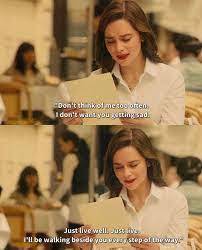
If we look back to the heart-felt words we read at the beginning, we see not only a hurt lover but a distraught caregiver that has given so much of herself. This movie allowed me to feel every emotion along with Emelia and understand the frustrations and tolerance required when providing care. I was able to understand the emotional toll that may be experienced. Care giver burden is the term coined for this. It can be described as the “feeling of heavy responsibility, constant worries, and uncertainty about patients’ needs and constraints in caregivers’ social life” (Ghazawy et al., 2020).
The last point that stuck out to me was Will’s social isolation. He loved socializing and going out with friends but is now unable to do so. This highlighted the importance of having communities that are inclusive and accessible to people who live with disabilities. “Improving accessibility brings about increased quality of life; creates more independence and better social integration” (The Main Benefits of Improving Accessibility and How Accessibility Benefit Society - O’Herlihy Access Consultancy, 2015).
Overall, this movie was not just to pass my leisure time but a learning curve as a future OT. Perhaps if Will has a more accessible environment, his quality of life would’ve improved. Perhaps if he was given more choice during the mundane everyday tasks and if he was enabled better, he would have a greater sense of autonomy. The list of possibilities could go on but the main take away for me is to never look at a disability at the surface. There are so many factors to consider. So we need to move away from the medical model and view our patients as real people, with real emotions and maybe then we will truly make an impact.

References
Ghazawy, E. R., Mohammed, E. S., Mahfouz, E. M., & Abdelrehim, M. G. (2020). Determinants of caregiver burden of persons with disabilities in a rural district in Egypt. BMC Public Health, 20(1). https://doi.org/10.1186/s12889-020-09266-4
Psychological Impact of Acquiring a Disability. (n.d.). Rockymountainada.org. https://rockymountainada.org/resources/research/psychological-impact-acquiring-disability
Steckermeier, L. C. (2020). The Value of Autonomy for the Good Life. An Empirical Investigation of Autonomy and Life Satisfaction in Europe. Social Indicators Research, 154. https://doi.org/10.1007/s11205-020-02565-8
The main benefits of improving accessibility and how accessibility benefit society - O’Herlihy Access Consultancy. (2015, January). Www.accessconsultancy.ie. https://www.accessconsultancy.ie/Main-benefits-improving-accessibility-how-accessibility-benefitssociety#:~:text=It%20is%20safe%20to%20say
University Of Missouri . (2020). Euthanasia - MU School of Medicine. Medicine.missouri.edu. https://medicine.missouri.edu/centers-institutes-labs/health-ethics/faq/euthanasia#:~:text=Euthanasia%20is%20the%20practice%20of
1 note
·
View note
Text
The Therapeutic Use Of Self.
Imagine that you’re beginning your health journey (for the 3rd time this year) and you decide to start using an air fryer, you already have a functioning air fryer somewhere high up in your kitchen cupboard but you did not attempt to get it, instead you just ordered and newer and bigger one that would fulfil the same purpose. Why would you invest in something that you already have? Doesn’t make sense, does it ? As a future occupational therapist, I can draw a comparison between this. All 5 of my scrub pockets overflow with pens, pieces of paper, a deck of cards, and other random therapeutic items…not to mention my thick assessment file. Out of all these tools the most important and valuable tool of all is MYSELF. Whilst the rest is important, I need to make therapeutic use of myself. This means that as a therapist I can influence the outcome of therapy with the use of my own “personality, perceptions, opinions, and judgments” (MOTR/L, 2023).
According to Wong et al. (2020), there are six therapeutic modes that characterize client–therapist interactions in occupational therapy: advocating, collaborating, empathizing, encouraging, instructing, and problem solving.
OT is beautiful because we aren’t healthcare workers that are restrained to the medical model…we have meaningful, personal relationships with our clients. We collaborate with our clients.
A good way to begin using yourself as a tool in therapy is to begin building rapport and trust with your clients. This will ensure that client’s understand that you’re on the same team, it provides a safe place for them to open up, share personal information that may have therapeutic implications and they would be more likely to fully engage in therapy with a therapist they can trust. Research found that in order “to develop a good rapport, your therapist must, among other things, demonstrate empathy and understanding. (Successful Mental Health Treatment Depends on Good Therapeutic Rapport, n.d.). During my initial contact with my clients, rapport building is the first step I utilize. I ensure they are aware of the confidentiality of our sessions and I show empathy by trying to understand from the client’s perspective with the hope of trust in return. My clients we able to trust me and therefore engage in therapy with me.
Another part of the therapeutic use of self is advocacy- this involves advocating for our patients and providing them with additional resources to ensure therapy is therapeutic (MOTR/L, 2023) . I utilized this in therapy by advocating for my client’s participation in groups that are more inclusive to his visual impairment. I did this by exploring games that he is able to complete using his other senses/ strengths.
It is important to be present with the client (attunement), to provide unconditional positive regard (accept that they are trying their best), self-disclosure (good for building rapport), and the ability to balance the power differential between the client and you as a therapist. (Abson, 2019)
As a future therapist my thoughts when approaching a new client has changed…it is no longer based on What notes apply? …to now thinking more about what would it feel like to be in their place? If I were them, what would I want from my therapist? This frame of thinking allows me to show empathy and therefore prioritize my client’s needs.

I still have not mastered the skill of using myself as a therapeutic tool but I can say that I have developed quite a bit since the beginning of the year. I used to thinking that it was “wrong” to spend time talking about an unexpected topic during a session and I used to be concerned with impressing my supervisor. But now, when I see a client, I no longer see a case that I need to solve. I see a human being in need of help and most importantly, a friend. Be it praise, encouragement or just a simple act of kindness. Every client I have seen were all in need of something common…a friend. As an OT I am the best and most valuable multipurpose therapeutic tool there could be!

References
Abson, D. (2019, March 3). Therapeutic Use of Self. The OT Hub. https://www.theothub.com/article/therapeutic-use-of-self
MOTR/L, M. C. (2023, April 27). How To Use Therapeutic Use Of Self In Occupational Therapy | OT Flourish. Otflourish.com. https://otflourish.com/therapeutic-use-of-self-occupational-therapy/#:~:text=What%20is%20therapeutic%20use%20of
Successful Mental Health Treatment Depends on Good Therapeutic Rapport. (n.d.). Verywell Mind. https://www.verywellmind.com/therapeutic-rapport-2671659#:~:text=Importance%20of%20Developing%20Therapeutic%20Rapport
Wong, S. R., Fan, C.-W., & Polatajko, H. (2020). Exploring Culture and Therapeutic Communication: Therapeutic Mode Use by Occupational Therapists in the United States and Singapore. American Journal of Occupational Therapy, 74(3), 7403205120p1. https://doi.org/10.5014/ajot.2020.033936
0 notes
Text
Mental Health...the Cinderella of healthcare.
Mental Health is known as the Cinderella of Health care.
Picture this… its cold and rainy and you’re on your way home from a long day of work. Your mum has made your favorite, comforting chicken pasta. You could almost taste the creaminess of the pasta sauce as you enter the door. You take a bite of the pasta and all you taste is blandness ?! Your mum forgot to add in salt. You never really appreciated or acknowledged the role of salt until that very moment. Salt is such potent ingredient; it isn’t always seen but has a huge impact and can be easily forgotten about. Such is the role of mental health in the health care realm. Mental health has been regarded as the Cinderella of healthcare- it is the neglected and overlooked aspect that rarely receives the attention it deserves. Research has proven that “only 27% of those living with severe mental disorders receive treatment” (Nguse & Wassenaar, 2021). So that leaves me questioning…”Why?... What are the barriers?”
If we relate this to the story of Cinderella, we find that she was unappreciated and neglected- mental health care is often underfunded and understaffed as compared to other components of healthcare. It was found that, “under-funding of mental healthcare hampered prevention and diagnosis of mental illness, and limited access to treatment.” (Mental Health in SA in Dire Need of Better Funding: SASOP , n.d.). This is due to the unequal distribution of resources within the healthcare system.
Cinderella was locked away by people who were unable to see her worth, they failed to understand her value or they were threatened by her. Her step mother also viewed her in a negative light. She saw Cinderella as burdensome and shameful. Such is the views of mental health in the eyes of society. This is important because one of the primary reasons mental health is neglected is due to the stigma of having a mental health illness. People often feel ashamed or burdened by their illness. People often have biases regarding mental health and this causes people to delay “in help-seeking and discontinue treatment” (Knaak et al., 2017).
It is also possible that a reason for the neglect of mental healthcare is that people feel threatened by it. People often fear what they cannot understand. Unlike physical illnesses that are easy to see, diagnose and treat; mental health illnesses are abstract and may present as daunting. “One of the major challenges of successful integration of mental health into PHC is the lack of adequate knowledge, positive attitude, and skills for mental health service of primary health care professionals participating in care and treatment of peoples at primary health care levels” (Ayano et al., 2017).
Cinderella worked the hardest within her family. She cleaned the house, kept everything in order and saw to the needs of her stepmother and stepsisters. Likewise, our mental health an important role, it is the foundation of who we are and how we function. “It strongly affects our daily lives – how they feel to us, as well as our ability do the things we need and want to, including work, study, getting on with people and looking after ourselves and others” (About Mental Health, n.d.). Neglecting our mental health will result in a decline in our occupational performance and functioning.
Cinderella’s step mother always concentrated on her daughters and on making them appealing for marriage- this could be seen as the other aspects of health that are always prioritized over mental health. This resulted in her forcing her daughters to achieve something that they were not or could not achieve. Likewise, in the healthcare system we often look at problems at the surface and try to readdress the issue by addressing the components that cannot give use the outcome we want to achieve.
By relating to this story, I now see that it up to us, the “fairy godmothers” to help Cinderella win the hearts of those around her and her prince (society and other healthcare professionals). We need to encourage health promotion and equip communities with the necessary information and tools. Although the winds of change are already blowing in the healthcare system, we need to continue to increase the respect and importance we place on mental health; only then will real change begin.
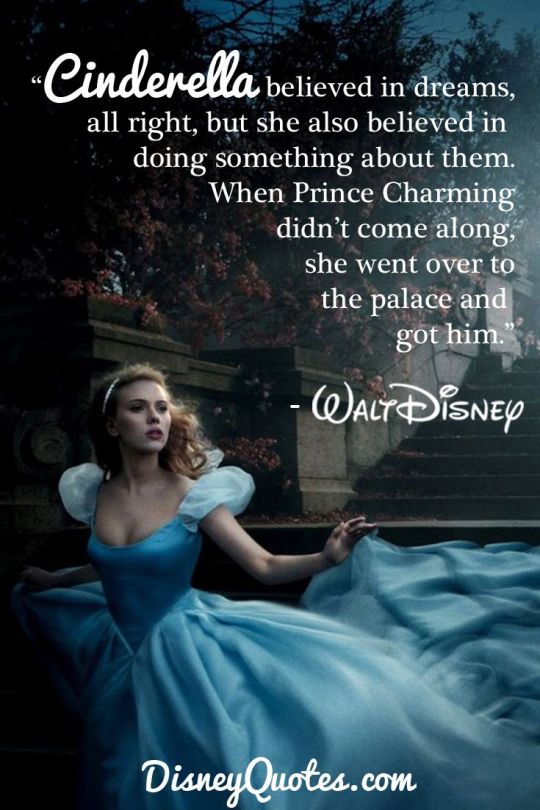
References
About mental health. (n.d.). Www.mentalhealth.org.uk. https://www.mentalhealth.org.uk/explore-mental-health/about-mental-health#:~:text=Our%20mental%20health%20is%20at
Ayano, G., Assefa, D., Haile, K., Chaka, A., Haile, K., Solomon, M., Yohannis, K., Adane, A. A., & Jemal, K. (2017). Mental health training for primary health care workers and implication for success of integration of mental health into primary care: evaluation of effect on knowledge, attitude, and practices (KAP). International Journal of Mental Health Systems, 11(1). https://doi.org/10.1186/s13033-017-0169-8
Knaak, S., Mantler, E., & Szeto, A. (2017). Mental illness-related stigma in healthcare. Healthcare Management Forum, 30(2), 111–116. https://doi.org/10.1177/0840470416679413
Mental health in SA in dire need of better funding: SASOP. (n.d.). Www.axesshealth.org. https://www.axesshealth.org/blog/mental-health-in-sa-in-dire-need-of-better-funding-sasop
Nguse, S., & Wassenaar, D. (2021). Mental health and COVID-19 in South Africa. South African Journal of Psychology, 51(2), 008124632110015. https://doi.org/10.1177/00812463211001543
0 notes
Text
Looking Back To Move Forward- The Importance of Self-reflection.
Imagine you’re a baker trying to perfect the recipe of a new cake for your bakery. The first time you try, the cake does not rise and instead of evaluating which ingredients work or if they are the correct amounts, you just remake the batch expecting a different outcome. Quite silly, isn’t it? Well, this is the same concept of self-reflection. “We learn by experiences and mistakes. But, unless we question ourselves about what our experiences mean and think actively about them, research has shown that we won’t make any changes” (Herbert-Smith, n.d.).
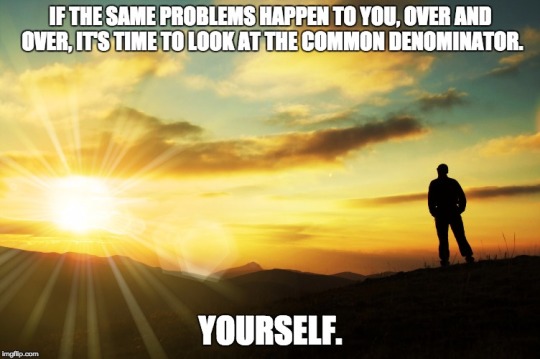
It feels like it is just yesterday that I received my university acceptance letter and to think that I am almost three-quarters of the way through to being an OT is surreal. Whilst I am proud of all the growth I’ve made, there are some “ingredients” that need tweaking. At this point in my journey, it is important to not just reflect on how far I’ve come but also where I am going and how I could be the best OT I envision to be. “Reflecting helps you to develop your skills and review their effectiveness, rather than just carry-on doing things as you have always done them.” (The Open University, n.d.)
According to The Open University,( n.d.), some factors that guide reflection include thinking about your strengths, weaknesses, happiness, and solutions. When I reflect on my journey, I count my ability to build a rapport with my client, show understanding and show empathy and not sympathy as valuable strengths.
Whilst capitalizing on my strengths is important, my weaknesses may overshadow if neglected and not improved on. “If you have a strong right arm and a very weak left arm you will always favour your strong arm to carry something heavy. Over time, you risk tweaking your back because you’ve been putting so much weight on one side of your body”. (Lipkin, n.d.)
One of my biggest weaknesses is being unable to be overly firm in my handling of patients when required. I am able to set boundaries but the line between respecting a patient’s choice and being firm to ensure the therapeutic nature of a session is not as clear as it should be to me. This is a weakness that I have identified and am working on.
These are just a few examples of my strengths and weaknesses that I need to harness and improve respectively as I continue to journey to be a qualified OT.
Another factor that guides self-reflection is feedback from others. Feedback is known to increase “self-awareness, helping you reflect on your performance and progress in your current role.” (Deeper Signals | the Top 5 Reasons Why Feedback Is Critical to Success, n.d.). I used to be fearful of feedback but now I view it as a chance to learn and grow.
The basis for self-reflection is passion. “Passion is an essential ingredient in being the best you can be, bringing you pride and purpose—and advancing your career to heights you may not have considered.” (What Does It Mean to Have Passion in Your Work? And Why Is It Essential? n.d.). This passion is what drives me and will continue to drive me to make these changes and not just offer a service to others that is merely acceptable but to be able to look back after providing therapy and be proud of what I had to offer. So, no matter how difficult some days may get, I let go of the mistakes, hold on the lessons, and move forward towards growth. As I am closer to the end of my OT student journey, constant self-reflection is what will aid me in achieving my goals.
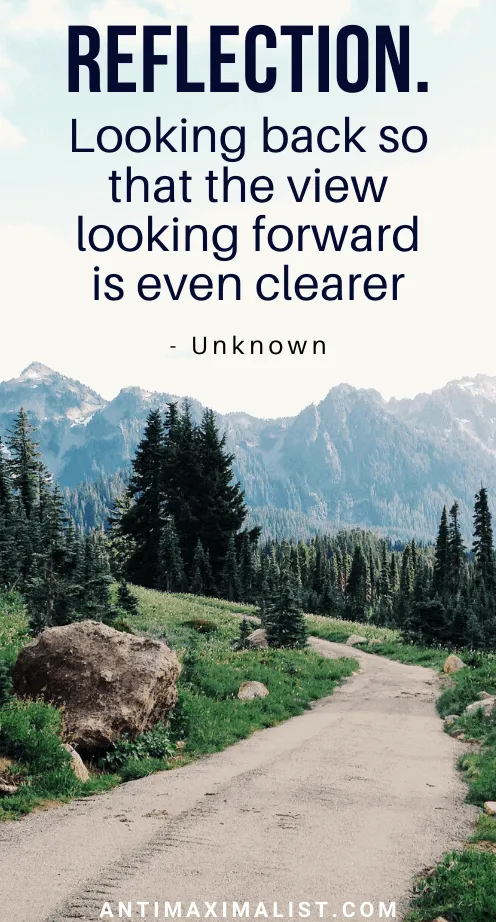
References
Deeper Signals | The Top 5 Reasons Why Feedback is Critical to Success. (n.d.). Www.deepersignals.com. Retrieved August 18, 2023, from https://www.deepersignals.com/blog/the-top-5-reasons-why-feedback-is-critical-to-success#:~:text=Encouraging%20self%2Dreflection&text=In%20this%20way%2C%20feedback%20is%20an%20important%20means%20for%20increasing
Herbert-Smith, K. (n.d.). The importance of self-reflection. Blog.irisconnect.com. https://blog.irisconnect.com/uk/community/blog/importance-of-self-reflection/#:~:text=Self%2Dreflection%20enables%20you%20to
Lipkin, N. (n.d.). You Need To Know Your Weaknesses To Boost Your Success. Forbes. Retrieved August 18, 2023, from https://www.forbes.com/sites/nicolelipkin/2022/06/28/you-need-to-know-your-weaknesses-to-boost-your-success/?sh=40b4e6307221
The Open University. (n.d.). Www5.Open.ac.uk. https://www5.open.ac.uk/choose/unison/develop/my-skills/self-reflection#:~:text=Reflecting%20helps%20you%20to%20develop
What Does It Mean to Have Passion in Your Work? And Why Is It Essential? (n.d.). Www.linkedin.com. https://www.linkedin.com/pulse/what-does-mean-have-passion-your-work-why-essential-cheri-gudaitis
1 note
·
View note